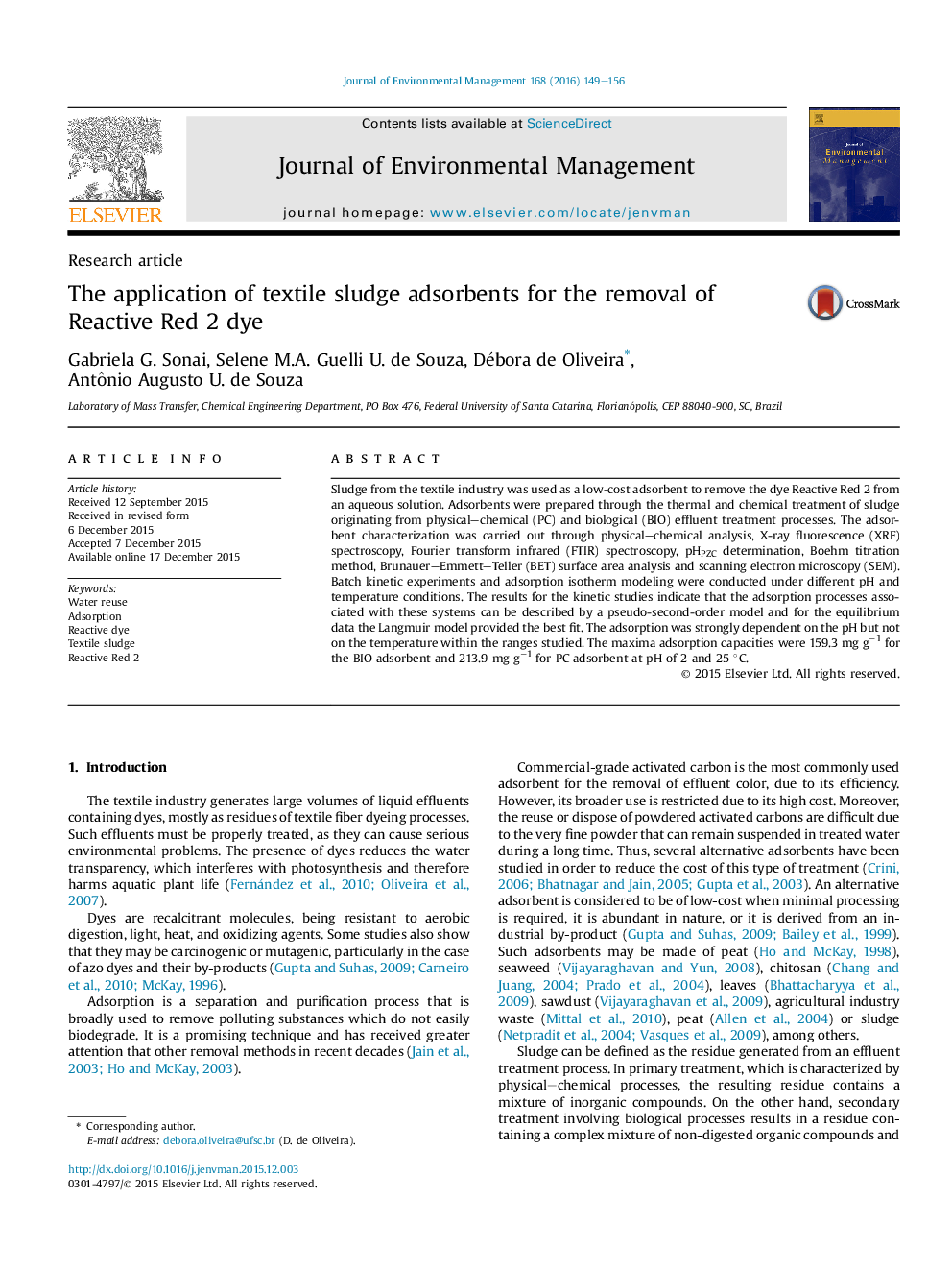| کد مقاله | کد نشریه | سال انتشار | مقاله انگلیسی | نسخه تمام متن |
|---|---|---|---|---|
| 1055554 | 1485244 | 2016 | 8 صفحه PDF | دانلود رایگان |
• Sludge from the textile industry as low-cost adsorbent to remove reactive Red dye.
• The adsorption processes could be described by a pseudo-second-order model.
• The PC adsorbent showed better adsorption capacity than the BIO adsorbent.
• Adsorption of textile residue improves by thermal and chemical treatments.
• A low-cost alternative adsorbent was compared to commercial-grade activated carbon.
Sludge from the textile industry was used as a low-cost adsorbent to remove the dye Reactive Red 2 from an aqueous solution. Adsorbents were prepared through the thermal and chemical treatment of sludge originating from physical–chemical (PC) and biological (BIO) effluent treatment processes. The adsorbent characterization was carried out through physical–chemical analysis, X-ray fluorescence (XRF) spectroscopy, Fourier transform infrared (FTIR) spectroscopy, pHPZC determination, Boehm titration method, Brunauer–Emmett–Teller (BET) surface area analysis and scanning electron microscopy (SEM). Batch kinetic experiments and adsorption isotherm modeling were conducted under different pH and temperature conditions. The results for the kinetic studies indicate that the adsorption processes associated with these systems can be described by a pseudo-second-order model and for the equilibrium data the Langmuir model provided the best fit. The adsorption was strongly dependent on the pH but not on the temperature within the ranges studied. The maxima adsorption capacities were 159.3 mg g−1 for the BIO adsorbent and 213.9 mg g−1 for PC adsorbent at pH of 2 and 25 °C.
Journal: Journal of Environmental Management - Volume 168, 1 March 2016, Pages 149–156
